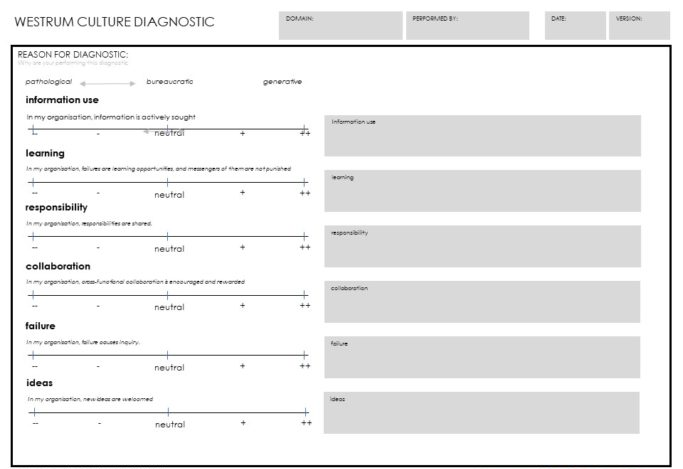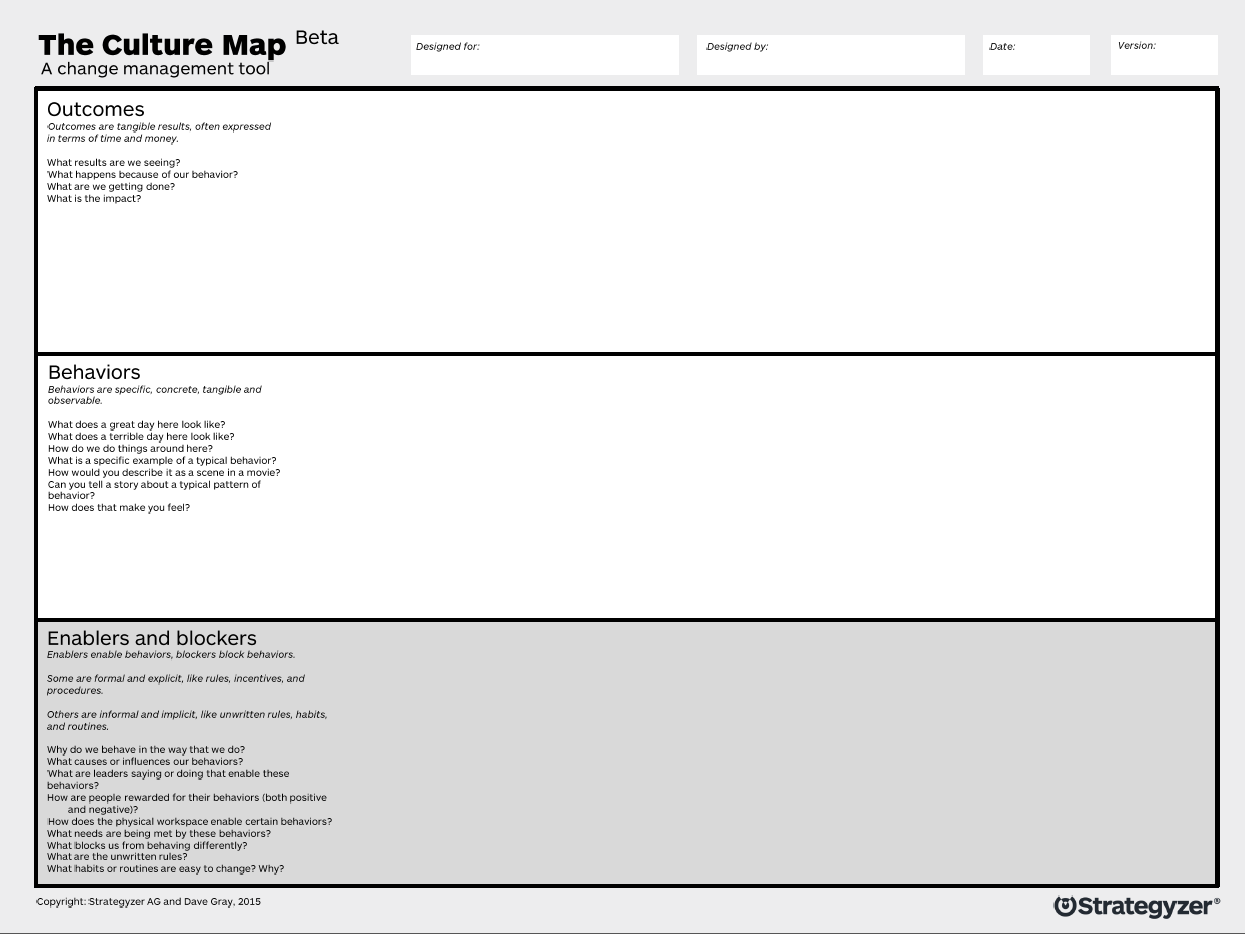“Culture eats strategy for breakfast.” Peter Drucker
What Is Culture
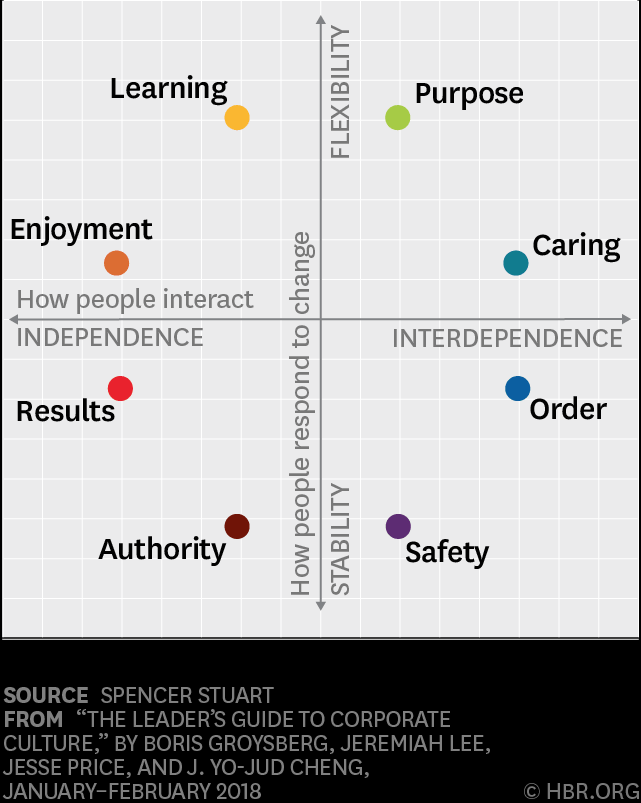
Company culture is an oft cited reference to the behaviors of individuals and groups and their basic attitudes during both successful and stressful times. The company culture relates to management and individual behaviors. It is an essential measure in the success of organizations. Corporate culture cannot truly be defined as it is an ever evolving complex set of interrelated factors.
Organizational culture is a vast and complex topic. This short essay is an introduction to not just what it is but also why it is important for us as technologists. The essay is not an attempt to lay it all out like a prescription, that would be an impossible task, but to set the broad outline for the technologist to utilize creatively.
Organizational culture can be seen through two different constructs: as a metaphor and an archetype. The metaphor is useful to understand, describe, and get aligned to the culture while the archetype is used more functionally as a guide to design and build more appropriate solutions for the organization.
The culture of an organization is implicit but also can be explicitly managed.
Why is organizational culture important?
The quote by Peter Drucker has now become part of corporate folklore. Business leaders are interested in culture because they believe it drives performance, success, and growth. For us as technologists it is important because our interventions impact culture, effect it in several ways. And because of the need to be cognizant of the upheavals this can cause, and the resistance successful adoption of solutions.
Two case examples to illustrate the point.

From a cloud architect:
“In an engagement with the government sector of a Caribbean country they were in the process of creating a data center. Being an enterprise architect for a cloud solution company, that did not make sense to me. I made presentations that showed the value of my company’s cloud. I was sure there was no way they could resist the savings and sundry other advantages. They “politely” rejected it with vague reasons. By and by I learnt that they believed, very strongly, that their data would not be safe or in their control in our data centers and open to other government’s prying eyes. Once I realized that I changed my tact and positioned for using our on-premise cloud solution. This, fortunately, received the appropriate attention.
Another organization, a pan Asia start-up, exchanged data using excel workbooks and email. Consolidation, loss of data and other inaccuracies made this entire process a nightmare. These were the early years post the internet crash. I designed a web application to be hosted at specific data centers, taking care of redundancies at the cable level as well as at the sever and data center levels. The business case looked great. But I received tremendous pushback from the COO. Over time I realized his familiarity with technology was limited to excel and he was scared of losing control. There was another aspect to his fear too and that was of not being at the center of trouble shooting and having to depend on geeks to solve any problems. I also sensed he had some personal animosity towards me. It took some crazy political maneuvering when he went on leave for me to finally get it online. By the time he returned it was too late to revert. “
What exactly is organizational culture?
The literature on organizational culture is vast. The ways of looking and thinking about it numerous.
However, a couple of quotes from organizational theorists should help.
“Organizational culture is defined as shared philosophies, ideologies, beliefs, feelings, assumptions, expectations, attitudes, norms, and values.” – Schein.
“Organizational culture seems to mean talking about the importance for people of symbolism – of rituals, myths, stories and legends – and about the interpretation of events, ideas, and experiences that are influenced and shaped by the groups within which they live.” – Frost et. al.
All people are born in a culture. Their cultures help define them. They learn culture as part of the socialization process. As children, first through the interactions with parents, then school, and subsequently other groups. These formed adults enter into organizations and then help shape the organizations culture. But in the modern world there are many different background cultures which impact the organization.
People and Culture
One way of understanding both change and culture is the to think of all of the elements of change surrounding and within an organization. In the following, people have their mood, their environment, their biases, personality, mood, and history. This situation is exponential in complex organizations.
Organizational culture is both visible and invisible. It is visible in rites, rituals, structure, function and invisible in beliefs, values, and norms. All these mechanisms influence the way people think, feel, and behave.
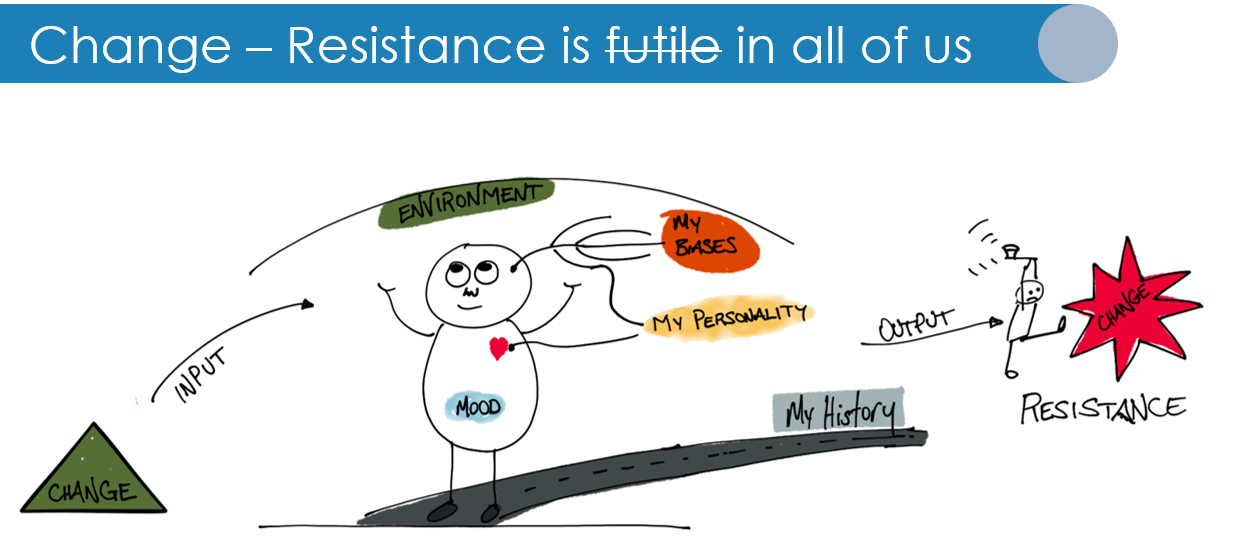 Artwork by Gar Mac Criosta
Artwork by Gar Mac Criosta
Leadership and Culture
The culture of leadership, that is much the rage today, encourages the co-creation of a constantly evolving culture. Everybody becomes responsible for the culture of the organization. Although the leader and his team play an instrumental role in setting the tone and defining its broad contours and salient features, culture is influenced both by the people contributing to it and the larger environment. Microsoft’s culture in the past was geared to selling licenses and MS Windows. The joke at one point was, “no matter the question SharePoint is the answer”. Today, with new leadership, all that seems to have changed. It is no more about licenses but about solutions and the Cloud. People are more geared to listening to the customer. Innumerable training modules focus on empathy and the customer’s journey. Different parts of the organization work more closely together. New leadership, new processes, constant reinforcement all have effected this change.
Using Metaphors for Culture
As everyone has experienced, culture is complex and difficult to understand. Fortunately, organizational theorists have devised a way to make it easier; through the use of different metaphors as organizing devices in thinking and talking about culture. These metaphors provide different lenses through which to examine and understand culture.
Culture as exchange regulator
The organization creates a culture that guides how social relationships within the organization are played out. Culture is used to ensure alignment to common goals and the interests of the organization and in that sense of the collective. Culture replaces the need for close monitoring and control. It ensures everybody believes that there is a fairness at play as long as they are aligned to common goals.
A good example of this can be found in certain recruitment processes. Through the multiple rounds of interviews the organization ascertains whether the candidate has the qualities that fit the social dynamic of the organization. Even if only one of the interviewers reject the candidate, they may be cut. Getting the right fit is far more important than filling the seats. A specific candidate could well be working with any one of the interviewers in a common project and it is important to ensure he/she was someone that would fit into any team.
Culture as compass
The value system of organizations acts as a guide for organizational goals, policies, and strategies. Values are intended to be long-lasting, reliable, relevant, and capable of keeping people on the right course. But values are played out at multiple levels. An example of these values being played out can be seen when some employees petitioned their executives to terminate a contract for the US military. The company responded to the petition saying, “We made a principled decision that we’re not going to withhold technology from institutions that we have elected in democracies to protect the freedoms we enjoy”. In this statement you can see both visible and invisible values operating; passion for customers, self-critical/questioning and finally their belief in supporting democracies, which is not specified anywhere. Further in living their own value of both democracy and being open and respectful the company supported employee choice of not working on these technologies.
Culture as social glue
Culture, through shared values, beliefs, understandings, and norms is used to avoid/reduce conflict and create a sense of harmony and community. Team outings, trainings, donation drives, certain kind of group rewards and in these pandemic times the concern organizations show are some of the ways that community is built.
There are several other metaphors for the organization, as machine, as organism, as a political space, as a psychic prison etc. Using a combination of them can help in deepening our understanding of the organization and provide important insights with which we can be better aligned with an organization’s goals/outcomes, and behaviors.
But for technologists the question remains.
Why is Culture Important to Architects
The way a corporate culture works affects almost all aspects of an architecture practice. Is the company more risk averse or more innovation focused? Do managers support or punish failure? Are the employees motivated or just earning a paycheck? These kinds decision systems, metaphors and social dynamics impact how the architect engagement model may be implemented. Think of an environment where IT and other business units only interact through very well defined points of contact. This limits both the agility of the organization as well as the ability to understand architectural requirements, decisions and the value generated from delivery.
Remember we don’t get certainty; we get better at dealing with uncertainty.
Here are some elements of culture which impact directly the architect engagement model.
| Culture Item | Description | Impact/Measures |
|---|---|---|
| Innovation | The desire and understanding of trying new things with the shared understanding that many, if not most, will fail. | Measured through the type of business cases which come through, the ability to experiment and the types and numbers of experiments run. |
| Motivation | How staff is rewarded, punished, and influenced. The primary driver for positive culture is that self-motivation of employees is respected and acted upon. | Motivation is one of the direct links to architecture work. Architects tend towards self-driven motivation as a whole meaning organizations without strong support for self-motivated work can create a negative engagement model driven primarily by governance and control. |
| Risk-Tolerance | The level of risk that is acceptable in any aspect of work in the organization. | Risk-tolerance is the primary driver for an innovation driven engagement model versus a governance focused one. It also deeply affects the use of assessments, the agility and velocity of an organization. |
| Empowerment | Describes how and where decisions are made and how they are supported. Most successful enterprises in the long term learn to empower employees to make decisions. | For architects decisions form the very core of the practice. Thus empowerment and how an organization influences and impacts its employees decisions is one of the single most important cultural elements. |
| Fairness | The ability to see all points of view and to make clear and fair evaluations of employees and decisions. | Architects must be very careful to implement fairness and measures of fairness into the engagement model or risk being pushed out of the primary cycles of strategy and execution. |
| Celebrating Others | The focus on others successes and the ability to broadcast those successes to others in the organization. | Architects must be sure of their own value. As a part of the deep skills in human dynamics and stakeholder driven architecture the architect becomes a tool of highlighting others success and thereby becomes critical in making teams successful. |
| Trust | The belief in the reliability, truth or ability of someone or something. | Trust is the basis of positive human (stakeholder) relationships. For architects earning trust, developing a trust based engagement model including trusting the decisions of the extended team is a critical milestone in maturity. |
| Empathy | The ability to understand and share the feelings of others. | The stakeholder driven architecture approach puts empathy ahead of many other aspects of design and delivery. It allows the architect to understand the customers journey, the stakeholders outcomes and the essential human forces which shape a solution. |
| Safety | The condition of being protected from risk, danger or injury. | The culture of an organization can be inherently risky (like a startup) and yet feel safer than a large corporation (where layoffs may be common). The architect team both needs to create safety for its stakeholders and extended team as well as needs safety to experiment, innovate and deliver business technology strategy. |
Tenets
One of the largest frustrations for architects is when the corporate culture limits their ability to truly reach levels of maturity. Maybe the organization has a distrust of technology due to limitations in management understanding. Or maybe the employees have been burned by IT too many times to care. This can happen within the technology community as well.
Become a Trusted Advisor
One of the first steps of the architecture practice is developing its stakeholder relationships. Thus the BTABoK uses a stakeholder driven approach. Catalog key stakeholders to the architecture practice and begin cultivating relationships. This will take time and care as they may not be directly accessible.
Be a Pessimistic/Optimist or the Other Way Around
Both pessimism and optimism are necessary in a mature practice. Driving innovation without careful thought or decision methodologies can create unnecessary risk and possibly issues with safety. Thus we say the architects in the practice can be pessimistic/optimists or optimistic/pessimists but not the same in both categories. This practice will force both a drive towards innovation as well as the realism and numbers necessary to increase stakeholder satisfaction and benefits realization.
Empathy Trumps Design Daily
Learning to understand customers, stakeholders, partners and people is a real issue for technology professionals of all types. Often architects will identify massively valuable opportunities for the organization. However, without empathy the recommendation may face objections that cause the solution to be rejected. For example, does the solution threaten someone’s job or a group of people? Does it threaten a pet project of another stakeholder? Having empathy with others will allow the architect team to not only design better solutions for customers but also navigate the pathways of the organization.
Different But Equal
Previous decades were filled with stories of ‘the ivory tower architects’ or ‘top-down architecture’ or ‘architects over engineers’. The architecture practice must establish that the focus for architecture is on something different from engineering, management, product owners, and other roles and that it is not an ego driven activity. This different but equal approach is what creates healthy tension in how the architect organization is assigned and how it interacts with other roles.
Owners Are Burnt Not Born
Stop Scaring People
Architecture is about change and change is terrifying for most humans. Especially as they do not know where they will fit in after large solutions deploy. Going back to the tenet ‘Empathy Trumps Design’ architects must know how to use common language that envisions solutions which benefit the company but also do not overwhelm their audience. Overly technical language, radical innovation, and similar types of conversations can create a sense of fear in the culture of the organization. While the architect team may be ‘Artisans’ in the SATIR change model and thus deeply comfortable with uncertainty, it is guaranteed that a large part of the stakeholder community is not.
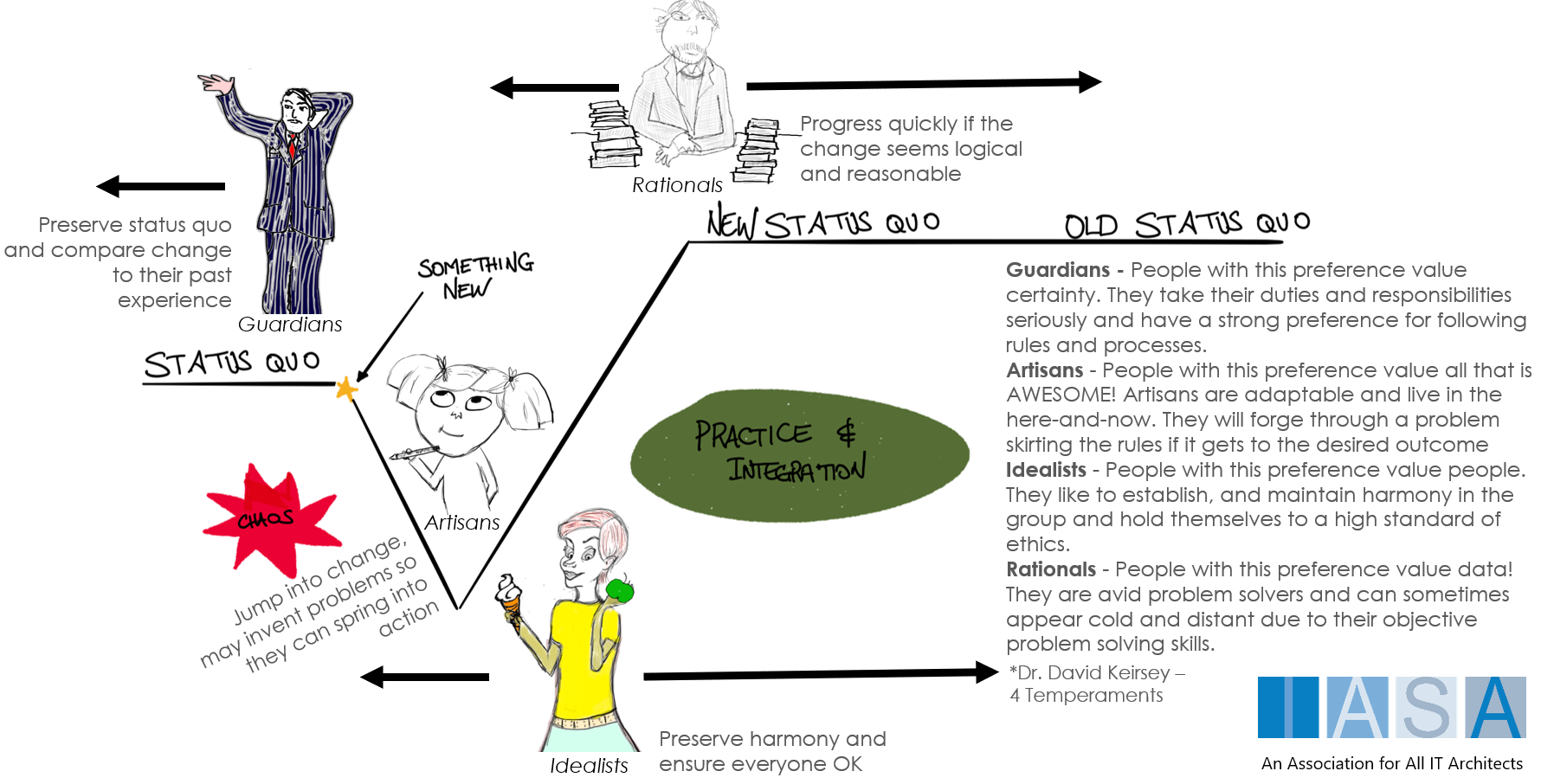 SATIR Change Model
SATIR Change Model
How should culture impact solutions?
Metaphors help decode culture include people, relationships, the politics, beliefs, assumptions, shared meaning, and other aspects enabling us to work more effectively with the organization and the people within it. These will impact the Scope and Context of architecture engagement as well as potential Coverage. They may give a sense of what kind of technologies may work or not and the principles which should apply to the organization, the teams, the delivery methods, decisions and lifecycle of the engagement model. They define an organizations adaptive style which in turn affects strategy and solution structure.
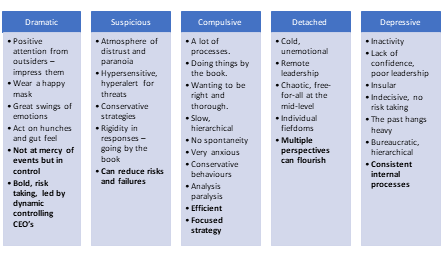
There are five different archetypes of culture that organizations are supposed to fit in to a greater or lesser degree. No organization fits entirely into one archetype. But one will be dominant. The archetype, according to the psychologists, is defined by the organization’s leader/key leader’s mindset. An archetype is neither good nor bad. It is more a question of balance and fit. It is only when there is an excessive use of one archetype that the organization tends to become dysfunctional. Further it is not necessary all the characteristics of a specific archetype have to exist. Consider the characteristics of the different archetypes in the diagram. Notice the points in bold. They suggest the advantages of each archetype. How would an architect design and build technology solutions per archetype?
For the Dramatic organization I would think of a free-flowing knowledge solution where connections in the information to be made were left to the users or systems that enabled innovation and helped employees transform their ideas into opportunities could be another possible area.
Solutions for the Suspicious organization would definitely need to have a lot of checks and balances in place, especially if those systems engaged with the outside world.
The Compulsive organization would be a lot like the suspicious organization but with signoffs at every step and multiple notifications sent out.
My sense is technology would work well for the Detached organization, but it would not be wise to recommend integration between solutions used by different units.
Consider the following example.
“There was a very successful family business built over several generations. The “owner” was a dominant leader unlike the leadership type mentioned for the archetype. The rest of us were merely tools who were discouraged from discussing anything with each other. Even if one had doubts and questions it was only the owner who was to be approached. He may call others to the discussion but that was his prerogative. Ideas only flowed top down. Silence hung heavy through the office. Employees were “given” facilities based on the largess or discretion of the owner. For example, while I was there an employee died and the widow was given a lumpsum amount and further support because the employee had been “loyal”. As technologists our only job was to code the ideas handed down to us. We did not know what application another person was developing. Most applications were silos. We built strong rules-based solutions. They worked splendidly even if they concentrated all the decisions in the hands of the boss. At one point, in the very short time I spent there, I remember beginning to become more and more introverted.”
Understanding the Culture
There are many tools available to diagnose culture in the marketplace. As a part of engagement model development the use of these tools can provide valuable insight into how to best grow the architecture practice.
Westrum Culture Diagnostic
The WCD provides a tool to understand how culture can be understood from a information sharing, learning, responsibility, collaboration, failure and ideas perspective.
Culture Map
The BTABoK follows the folks at strategyzer quite closely. They provide a Culture Map tool to help understand the dynamics and implementation of culture.
Hacking the Architecture Culture
Here are a few culture hacks to help address common difficulties in relationship between the architecture practice and the organization.
Stump the Architect
This hack is used to address stakeholders who feel that architects are ‘know it alls’ and that they architecture practice feels it is smarter or more capable than the community. Bring people to a meeting a play ‘stump the architect’. Take any topic related to the solution and the stakeholders can ask questions until the architect doesn’t know the answer. Then they discuss how they might better work on that answer together.
Mentor Not Master
Go to the standups of teams. Join design sessions. Even if the architect knows the answer ask leading questions instead. Listen, ask, listen, ask. Never tell. This is how an architect team mentors and grows the trust and the relationships it needs to be successful.
All Architects Still See Patients
This is an axiom/tenet from medicine. It means that every architect is delivering something just like the chief of medicine still sees patients. It is pretty hard to question the value of an entire architecture practice that is delivering on the most important vision/mission/value of the organization. Look specifically at assignment methods in the engagement model.
Never Have Lunch in the Same Place Twice
Architects can become very insular or very busy. This limits contact with other roles in the organization. One way to grow relationships organically is through ‘lunch’ or other non-work social activities. If possible geographically or physically, participate in these activities in areas and with people and employees the architects would not normally interact with.
Ask to be Mentored/Taught
People love to talk about what they know. Architects often say they are not invited to meetings with ‘the business’ or about strategy. Instead of trying to get formally invited, have the members of the architecture practice ask a stakeholder in marketing to teach them personally. Do it with sales. Do it with operations. Do it with finance. Soon the team will have a huge stakeholder community who knows that the architecture practice ‘understands them’. Doing this over and over again will give the team large numbers of ideas for business cases as well as much stronger cultural integration across the company.
Make Someone Else Successful
Architects are often worried about the perception of their value. And there is a lot of truth to this. However, the easiest way to be valued is to make someone else look good in the way they need to be measured. Write business cases relentlessly as a practice. Give them away ‘for free’. Let others take the credit, but keep doing it over and over and over. The team will soon be invited to every meeting where innovation is necessary.
References and further reading
Anthony, P., 1994. Managing Culture. s.l.:Milton Keynes: Open University Press.
Deal, T. a. A. K., 1982. Corporate Cultures: The Rites and Rituals of Corporate Life. Reading: MA: Addison-Wesley.
Diamond, M. A., 1993. The Unconscious Life of Organizations. London: Quorum Books.
lvesson, M., 1987. Organizations, Culture, and Ideology. Institute Studies of Management and Organization, pp. 27(3): 4-18.
Morgan, G., n.d. Images of Organization. 2nd ed. s.l.:CA: SAGE.
https://www.thealternativeboard.com/blog/culture-eats-strategy
https://www.linkedin.com/pulse/enterprise-architecture-culture-erik-van-der-voorden/
https://hbr.org/2018/01/the-leaders-guide-to-corporate-culture
https://www.greatplacetowork.com/resources/blog/6-elements-of-great-company-culture
Edgar Schein Book(s)
https://www.amazon.com/kindle-dbs/entity/author/B000APSBI8/ref=dp_byline_cont_book_1
Gamestorming
http://gamestorming.com/mapping-organizational-culture/
Strategyser

BTABoK 3.0 by IASA is licensed under a Creative Commons Attribution-NonCommercial–NonCommercial 4.0 International License. Based on a work at https://btabok.iasaglobal.org/
